My Brooklyn Ancestors
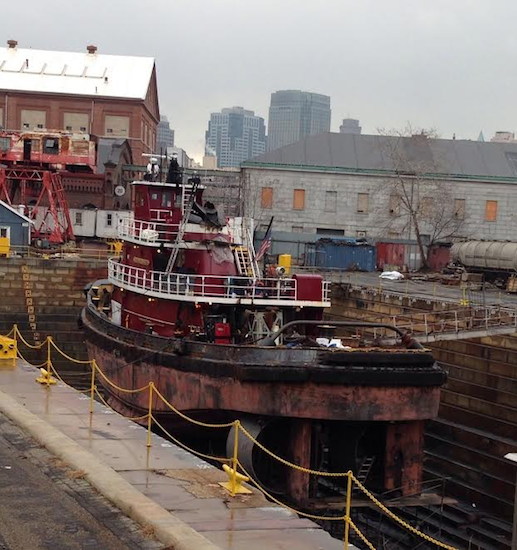
Screen Shot 2014-01-22 at 2.14.27 PM.png
When I feel like going for a long walk, I often head down from my apartment in Cobble Hill to Fulton Landing, where the Brooklyn Bridge anchors in Brooklyn. As part of a major renovation in 1995, the railing around the new pier was inscribed with this quote from Crossing Brooklyn Ferry, by Walt Whitman, who lived and worked nearby in the 1850s:
Flow on, river! flow with the flood-tide, and ebb with the ebb-tide!
Frolic on, crested and scallop-edged waves!
Gorgeous clouds of the sunset! drench with your splendor me, or the men and women generations after me!
Cross from shore to shore, countless crowds of passengers!
Stand up, tall masts of Mannahatta! stand up, beautiful hills of Brooklyn!
Throb, baffled and curious brain! throw out questions and answers!
Frolic on, crested and scallop-edged waves!
Gorgeous clouds of the sunset! drench with your splendor me, or the men and women generations after me!
Cross from shore to shore, countless crowds of passengers!
Stand up, tall masts of Mannahatta! stand up, beautiful hills of Brooklyn!
Throb, baffled and curious brain! throw out questions and answers!
I like being part of Whitman’s vision of “men and women generations after me!” I also like to remember generations who came before me, especially after learning a few years ago–having lived in Brooklyn for 30 years–that I am a direct descendant of the first Europeans to own land in Brooklyn, Joris and Catalina Trico Rapalje. The Rapaljes purchased land from the Lenape Indians in 1637, just north of Fulton Landing on Wallabout Bay.

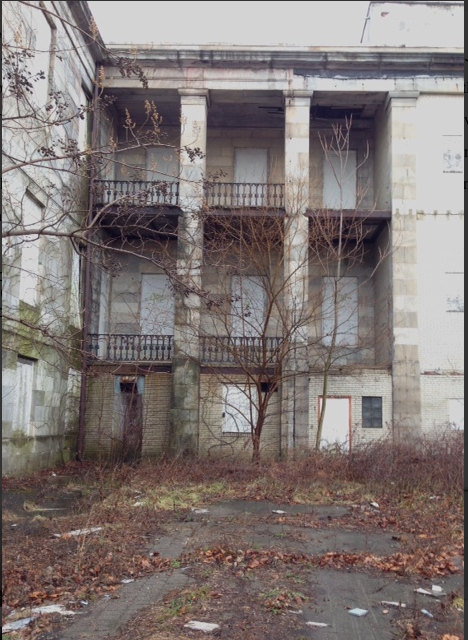
The history of this branch of my mother’s family before 1810 was unknown to us until my sister, Jenni, happened upon the internet site of a distant cousin who documented these ancestors going back to the beginnings of New York State. I felt a little overwhelmed learning my connection to Brooklyn dates back 400 years. I had a lot to learn.
I found information about Joris and Catalina Rapalje at the Brooklyn Public Library, the Brooklyn Museum, and in the best-selling book by Russell Shorto, The Island at the Center of the World: The Epic Story of Dutch Manhattan and the Forgotten Colony that Shaped America. The Rapaljes were French Huguenots who lived in France at a time when Protestants were persecuted. They married in Amsterdam in 1623, and four days later the newlyweds boarded one of the first Dutch West Indies ships to carry colonists to what was then called New Amsterdam. Russell Shorto wrote of their hasty wedding:
Being illiterate, both made their marks on the page. He was nineteen, she was eighteen; neither had parents sign the registry, which suggests that both were either alone in the world or alone in that part of the world, which amounted to the same thing. Like many who were to follow, they had nothing to lose. [1]
The ship crossed the ocean (the passengers included Peter Minuit, an early leader of the new colony), sailed up the Hudson, and dropped passengers at the newly-built fort in Albany. The Rapaljes lived in Albany for two years and then moved to Pearl Street in lower Manhattan, down the street from where I now work on Hanover Square, where they bought land, farmed and opened an inn. They prospered, and Joris Rapalje was elected to the first popularly chosen body in New York State– the Council of Twelve Men.
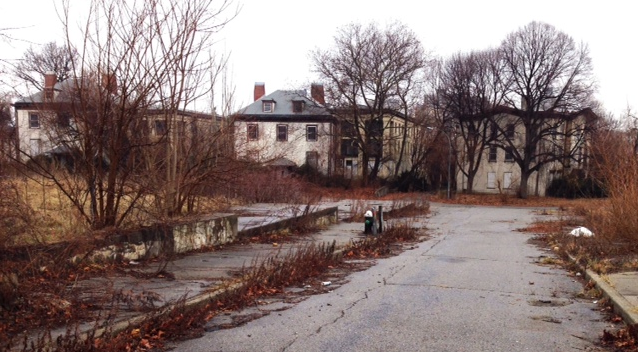
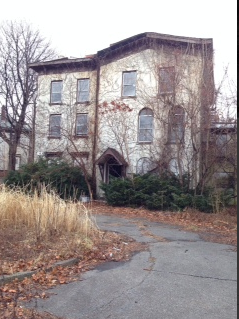
The Rapaljes developed the Wallabout property, but didn’t move to Brooklyn permanently for several years, which may have been due to conflicts with local Indians. Other settlers soon bought land in Brooklyn on the river and along the road that cut eastward through the maize fields tended by the Indians in the area between Wallabout Bay and Gowanus (now Old Fulton Street). Joris Rapalje in 1646 became a Magistrate of Breuckelen, as it was then called, the first municipality in New York State. In A History of Long Island, Peter Ross wrote:
The prospects of greater things led the mind’s eye of the resident to a vague and distant future, with scarcely any correct idea of what the place would be at the end of a hundred or two hundred years, and life was comparatively monotonous. The initial improvements of any new country are necessarily very slow, as the first settlers are not wealthy and are obliged to work laboriously up from small beginnings, with many losses by experimentation, accident, etc. For the time being, there does not seem to be any definite promise of great things soon to come. The capitalists arrive after a long time, the small capitalists first and gradually the larger ones afterward, and improvements are correspondingly more and more rapidly effected.[2]
Catalina Rapalje outlived her husband by over 20 years. She stayed by herself on the farm and died in 1689 at age 84, and the Rapalje land was handed down to their 11 children. In 1781, John Jackson purchased a parcel of the land and built a shipyard, now the Brooklyn Navy Yard. The rest of the land, in what is now DUMBO and Ft. Greene, was divided up among the family.


I am descended from two of the Rapaljes’ daughters, Sarah (thought to be the first European born in New Amsterdam) and Jannetje. Sarah’s great-granddaughter and Jannetje’s granddaughter was the same person–Adiranje Van Wyck. Adiranje in 1712 married Joseph Hegeman, the grandson of Adrian Hegeman. Adrian Hegeman emigrated from Holland in 1650 and became the largest land owner in the Village of Flatbush and mayor of the five villages which would eventually become Brooklyn. Adiranje and Joseph moved, along with three of Joseph’s brothers, to New Jersey and the next three generations of Hegemans lived in New Jersey and Virginia until James Hagerman (whose father Aram changed their last name to Hagerman) became an original settler of Richland County, Ohio in 1807. In 1884, James Hagerman’s great-great-great granddaughter, Fanny Ward Hagerman (my maternal grandmother) was born.
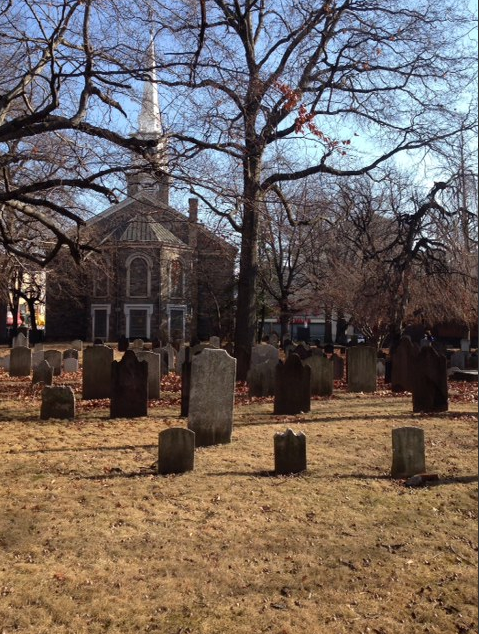
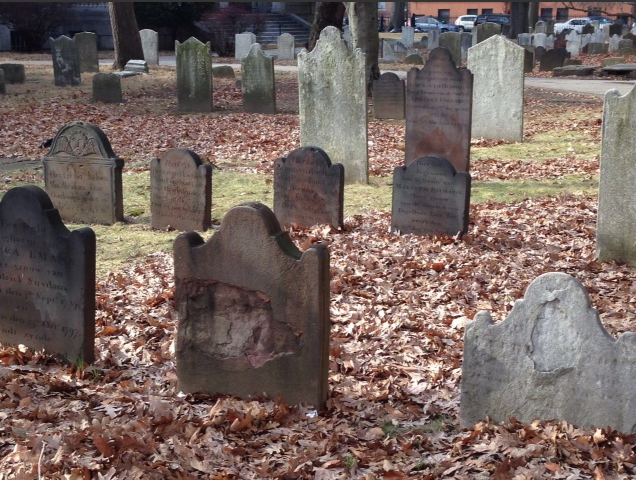
I expect the massive Brooklyn Bridge Park will eventually extend all the way from Atlantic Avenue to Williamsburg, but today Wallabout Bay is only accessible to the public by taking a guided tour of the Brooklyn Navy Yard. Before my tour began, I read the story of the Rapaljes in the Navy Yard visitor’s center and felt amazed and proud. The tour group included three people with personal connections to the Yard–an elderly man who had worked there after the war in 1948, a young man whose grandfather had also worked in the yard, and me. The guide told me I was the first descendant of the Rapaljes he had met. I was surprised to hear this, as they had so many children and so many descendants.
The Navy Yard has evolved from a naval shipbuilding facility (closed by the Navy in 1966) to a New York City-owned sustainable urban industrial park with “green” buildings, solar and wind-powered street lamps and the city’s first building-mounted wind turbines. The Yard is a dramatic, urban jumble of the past and the future. There are restored historic buildings; abandoned, rotting buildings; and unused dry docks that became useless when the large ships they repaired were unable to pass beneath the Brooklyn Bridge, which was completed in 1883. One, Dry Dock 1, completed in 1851, is still in operation–repairing mainly tugboats. Large and small businesses, including whiskey distilleries, art galleries and television sound stages have set up shop. There are no residences, restaurants, stores, or food vendors–the people who work there enter through a main gate and bring their own food in every day. The Navy Yard itself is like a new colony.
I asked our guide where my ancestors had lived. He pointed in the direction of a group of giant, unused cranes jutting up into the sky. I felt a little disappointed, as it did not look from a distance like a very nice ancestral site. When we got there, I looked out of the tour van at the rusty, industrial junk. We started up a hill toward the last stop on the tour, the Naval Hospital (which hadn’t been used since the 1980s). I remembered reading that Joris and Catalina’s home had been on the Hospital grounds, and the guide confirmed that. As we rounded the corner, I was pleased to see a peaceful lot. Flowers bloomed in the small woods surrounding the boarded-up hospital and administrator’s house. Feral cats, put there by the Navy to chase rodents, peered at us from a distance as we strolled around.
I then visited the Flatbush Reformed Church, the oldest church in Brooklyn, located a few blocks south of Prospect Park. Most of the early settlers were members of the church and are buried in the small cemetery there, including Joris and Catalina and their daughters, Sarah and Jannetje. The original sanctuary is gone (a new one was built in 1796). The still-active church is on busy Flatbush Avenue and the corner of Church Avenue–an urban environment vastly different from the pastoral scene in the 1600s. I wasn’t able to read most of the oldest headstones in the small cemetery, as the inscriptions have worn off.


But the Rapaljes left their mark on Brooklyn. Russell Shorto wrote, theirs was “a long-ago slapdash wedding of two young nobodies on the Amsterdam waterfront, which, as much as any political event, marked the beginning of the immigrant, stake-your-claim civilization not only of Manhattan but of America.” [3]
[1] Russell Shorto, The Island at the Center of the World, Vintage Books., New York, 2005, p. 41
[2] Peter Ross, A History of Long Island Vol. I, The Lewis Publishing Co., New York and Chicago 1902, p. 55
[3] Russell Shorto, The Island at the Center of the World, Vintage Books., New York, 2005, p. 42
Leave a Comment
Leave a Comment

Love your article about Rapaljes. I also am supposed to a descendant of Sarah and Jannetje. I will be passing your story on to my children,